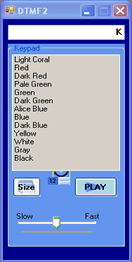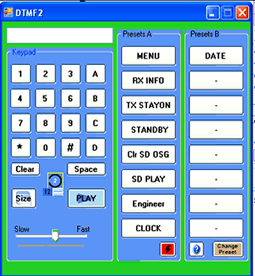

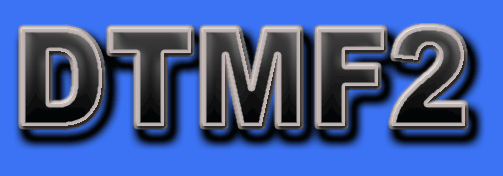
Please note: The program file has been updated to correct an error on the number 4 key (generates wrong tone). Please un-install the DTMF2 v1 program and install the v2 from the download on the dtmf2_encoder page.
INSTALLATION PROCEDURE.
The program folder 'DTMF2' can be installed any location on the same drive as the Windows operating system.
The 'DTMFdata' folder must be separate and on the same drive as the DTMF2 program and not in a sub-folder i.e. C: DTMF2data (not C:Program Files\DTMFData)
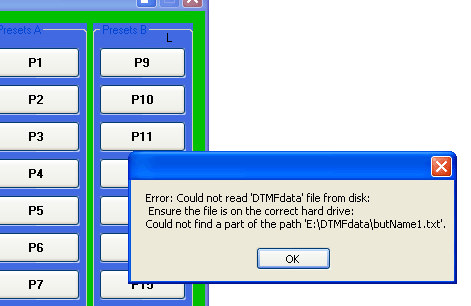
First time install : Run the setup.exe file (found inside the DTMF2 folder).
If you have not already got the Microsoft .Net framework installed on your PC you will be prompted to download the latest version (free).
Once installed the DTMF program can be run from the All Programs list on the Windows main window. It will appear under 'Home' initially. Right click it and rename it to DTMF2.
Right click the name of the program and rename if preferred.
Drag the DTMF2 icon over to the Quick Start list if desired.
.Ensure that the DTMF2Data folder is standing alone on the drive and is not inside any other folder.

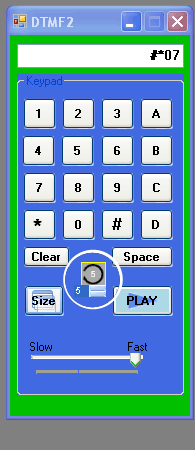
![]() This is the LOOP button. Used for testing and setting levels. Enter the code you want to loop into the entry window. Use the up/down buttons to select the number of times you want it to loop. Then click on the number alongside them which will transfer to the centre of the loop button.
This is the LOOP button. Used for testing and setting levels. Enter the code you want to loop into the entry window. Use the up/down buttons to select the number of times you want it to loop. Then click on the number alongside them which will transfer to the centre of the loop button.
It will turn red when clicked and the code that is displayed in the top entry box will replay the number of times chosen.
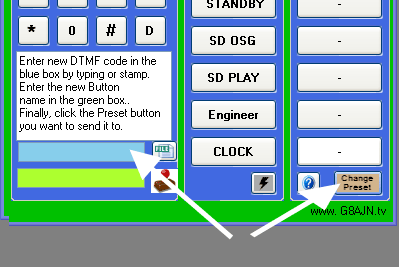
CHANGE PRESET BUTTON
Used when entering new or replacing an existing DTMF code and its button name.
When the 'Change Preset' button is clicked twice the code entry help box will appear to the bottom left of the keypad window. It is better to have the lightning flash button greyedout (unselected) first.
There are several ways to enter the new DTMF code.
Then type the name you want to have displayed on the button face (max 10 lower case characters) into the light green text box.
Finally use the mouse pointer to click on the button you want to use for the new details. This will erase the existing data for that button and enter the new data from the entry boxes.
Also see 'bulk copy data' below.

FLASH BUTTON
When selected (red) this permits a click on a preset button to immediately play the code associated with that button.
The grey option prints the code from the button into the entry window and then requires the user to click the PLAY button. This is useful for copying purposes, looping and adding/removing characters before sending.
BULK COPYING DATA FILES
The data files are deliberately independant of the program. This allows maximum flexibilty for editing externally to the program. Use a simple text editor like NotePad. (Word and similar are likely to add 'hidden' formatting characters so are not suitable).
If you are using the same repeater as someone also using DTMF2 it is possible to copy their DTMF2data folder and place it into the correct drive e.g. C: on your PC, saving you the effort of entering all the codes. It is not necessary to have the program running at the time.
DTMF2 cannot use the old original DTMF1 data file as it has only 8 presets, however it is possible to copy those 8 files over and paste them into the new folder using Windows Explorer and replacing the DTMF presets1 to 8 and names 1 to 8 OK.
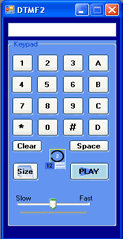

When you enter the K you will get a colour menu.
Use the mouse to select a colour with a single click.
